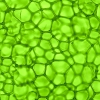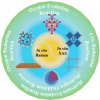
X-ray fluorescence analysis allows elemental analysis in a variety of environments without destroying the sample. The smaller diameter of the X-ray microbeam, the more accurate the elemental distribution can be. Because X-ray beams are not visible, an accurate method is needed to determine beam diameter.
A research group led by Professor Kouichi Tsuji and Specially Appointed Assistant Professor Tsugufumi Matsuyama of the Graduate School of Engineering, and Professor Hideyuki Ishi of the Graduate School of Science, at Osaka Metropolitan University, has developed a new method to evaluate the diameter of X-ray microbeams based on mathematical analysis. While validating the new method, it was found that it can be used to calculate beam diameters more accurately than the previously used conventional methods.
Currently, no uniform evaluation method for X-ray beam diameter has been established. Since this evaluation method was derived using mathematical analysis, it is expected to be widely adopted as an international standard. Potential applications of X-ray fluorescence analysis include materials development, environmental analysis, forensic science, biological sample analysis and analysis of archaeological and culturally significant objects.
Professor Tsuji concluded, “We hope that this evaluation method will be widely used, and that the establishment of this method of evaluating spatial resolution in X-ray fluorescence will contribute to the development of a wide range of fields, including material development and bio-imaging.”












